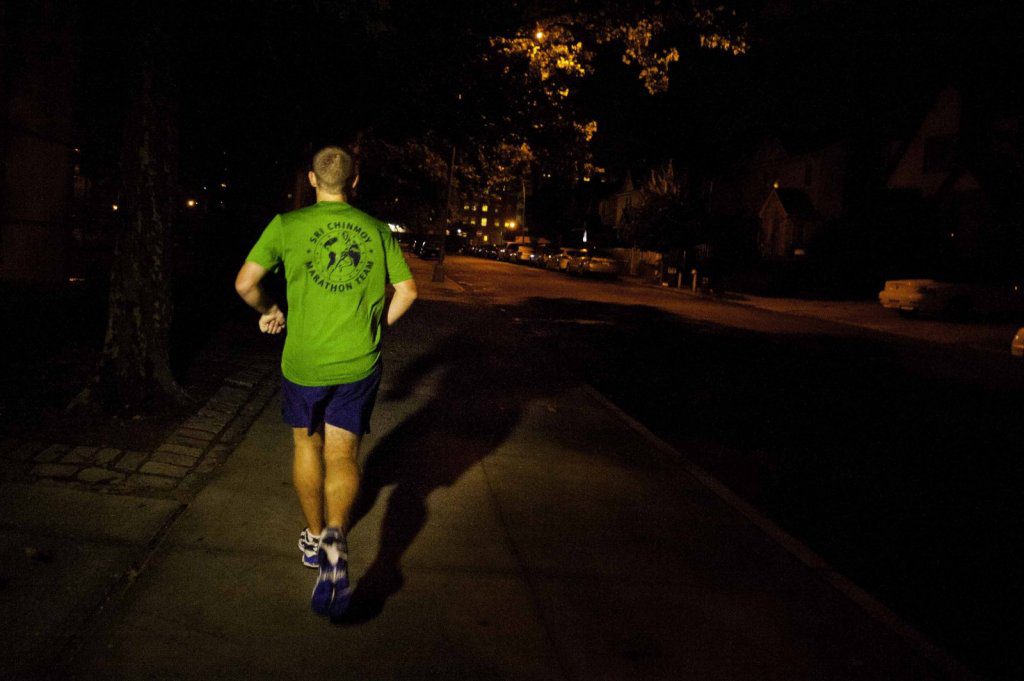Study: why running in the dark may feel harder

Have you ever felt your night runs are more difficult than those during the day? It might not just be you.
New research out of the University of Essex in Britain, headed by David Parry, simulated different optic flow environments while having athletes run 5K on a treadmill and found that in environments where your optic flow is perceived to be quicker you feel more tired.
First, optic flow is how you perceive your environment while moving through it. As you run through the forest and pass scenery, how you see it while moving past is the optic flow. It’s important for helping you understand the size and shape of objects around you and how quickly, if at all, they are moving. It’s important for hand eye coordination and making decisions on how you can interact with the world around you. The new research suggests it might also play a role in how difficult you perceive yourself to be working.
How does this matter about running at night? When it’s dark out your optic flow is fast because you can’t see objects farther in the distance. This means you perceive things to be moving by you faster than they really are, or, if running, you feel as if you are running faster than you are because objects seem to be moving by more quickly.
The study had twelve male, moderately trained, competitive runners perform a self-paced 5K time trial on a treadmill. Then, over the next few weeks, they all did three more self-paced time trials with a simulation of them running through a forest projected on a screen in front of them. One of the time trials had their treadmill speed calibrated to the speed of treadmill, one had the speed increased by 25 per cent, creating a fast optic flow similar to running at night, and a third had the speed decreased by 25 per cent, creating a slow optic flow.
The results were interesting: there were no notable differences between the different 5K results, but the runners were supposed to note when they felt they had covered each kilometre. In the fast environment they thought they had covered a kilometre faster than they had. In the slow environment the opposite occurred and they thought covering a kilometre took longer than it did. While reporting their estimates of when they covered a kilometre they also reported how tired they felt. The runners felt more tired in the fast optic flow environment even though they weren’t actually running faster. Simply thinking they were running faster made them feel more tired.
This could well be the reason running at night has anecdotally always been thought more difficult, although it’s worth remembering the study was not actually done at night, just on treadmills with simulated environments that mimic one aspect of running at night, a far cry from the real experience.
Parry, The lead author, did a similar study on cyclists in 2012 and found the same results, where cyclists with their optic flow unknowingly sped up perceived themselves to be working harder than they really were.


